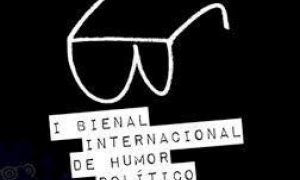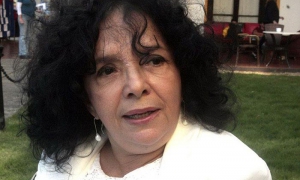As is customary at the end of every year, Cuban institutions award their greatest accolades, the National Prize for Music and the National Prize for Visual Arts.
Cuba’s National Prize for Music was awarded, dually, to outstanding musicians Leonardo Acosta and Sergio Vitier, while the Visual Arts Prize went to Lázaro Saavedra.
Acosta (Havana 1933) is a musician, researcher, journalist and writer. He has formed part of important groups who continue to make an undisputable contribution to the enrichment of national culture.
He began his musical studies with professors Sara Rodríguez-Baz and Gisela Hernández, and later took trumpet, saxophone and harmony classes with José R. Betancourt and Julián Orbón. He later studied orchestration, composition, counterpoint and musical composition with Federico Smith and Leo Brouwer, and learned how to apply harmonies to Jazz improvisations with Frank Emilio.
During the 1950’s he worked with important popular music bands and jazz groups and singers from the feeling movement, including Havana Melody, Cubamar, Julio Gutiérrez, Rafael Somavilla, Benny Moré, Aldemaro Romero, Armando Romeu, José Antonio Méndez, Frank Emilio, Rosendo Ruiz Jr, El Niño Rivera, Chucho Valdés, and Carlos Emilio Morales.
In 1958, with a jazz quartet consisting of Frank Emilio, piano; Papito Hernández, double bass; Walfredo de los Reyes, drums, and Leonardo Acosta, saxophone, the Jazz Club was created and in 1969 he participated in the founding of the ICAIC Experimental Sound Group.
With a vast conceptual approach he has addressed some of the most significant musical issues in the books: Música y descolonización; Del tambor al sintetizador; Elige tú que canto yo and Descarga cubana: el jazz en Cuba 1900-1950.
Sergio Vitier (Havana 1948) is a guitarist, composer and soloist. A renowned researcher of Cuban culture’s roots and traditions, his work is one of the most original, prolific and innovative in this arena over the last 30 years.
He studied guitar at the Amadeo Roldán School of Music and composition at the Havana Higher Institute of Art (ISA). His main professors were Isaac Nicola, Leo Brouwer, Federico Smith, José Ardévol, José Loyola and Roberto Valera.
Vitier has composed over 50 soundtracks, among them De cierta manera, 1974 (Sara Gómez); El brigadista, 1977 (Octavio Cortázar); MALUALA, 1979 (Sergio Giral); Guardafronteras, 1980 (Octavio Cortázar); Capablanca, 1986 (Manuel Herrera); Hoy como ayer, 1987 (Constante Diego) and Puerto Príncipe mío, 2000 (Rigoberto López).
A special mention is owed to his systematic work with filmmaker Santiago Álvarez in documentary cinema, his compositions for more than 20 television series, theatre, dance and ballet, as well as symphony and chamber music.
He has been a member of various music groups, includingFelipe Dulzaides´ Los Armónicos (1964-1966); Orquesta Cubana de Música Moderna (1967-1969); ICAIC Experimental Sound Group (1969-1978); Nuestro Tiempo Group and was founder and director of the ensemble ORU.
Outstanding among his discography are: Cuerdas cubanas; Homenajes; Travesía; Sergio Vitier/Martha Valdés: nuestra canción and Sergio Vitier: concierto. (Excerpts from the Cuban Institute of Music)
LÁZARO SAAVEDRA, INNOVATOR
The presentation of the National Prize for Visual Arts to Lázaro Saavedra (Havana, 1964), in the National Museum of Fine Arts, seems to confirm the prevailing tendency over recent years to highlight the role played by artists who represented a break in the Cuban visual arts discourse in the 1980’s.
Saavedra, given his own stature, has left an inedible mark on visual arts. Controversial? Yes, irreverent? Frequently, and representative of a prolific, persistent and renovating impulse, which has directly or indirectly influenced the works and attitudes of subsequent generations of artists.
Between 1976 to 1988, he studied art at an elementary and secondary level in San Alejandro, and continued to higher education at the ISA, where he was lucky enough to have Flavio Garciandía as a mentor. It was in the heart of this academic institution that he became a member of the groupPuré, together with Ana Albertina Delgado, Ciro Quintana, Adriano Buergo and Ermy Taño.
From that moment on, his presence in personal and collective expositions both in and outside of Cuba, increased, and he developed a very unique way of expanding the scope of his work – electronically.
Considered to be one of the drivers of conceptual art in Cuba, Saavedra has established his own expressive codes, which include his interest in graphic communication, pop culture references, common phrases and remarks, personal experiences and the controversial debate about other ways of considering art.
Curator Corina Matamoros summarized Saavedra’s work with the comment, “Lázaro is a creator with a natural tendency toward the instinctive, toward spontaneity, toward the immediate. This is evident in all his expressionist works, the debauchery of Puré, the multiple themes referencing daily life, the emotive nature of his commentaries, affection for sketching, his use of humor, anarchy and re-use of other works.
But after this first inclination comes a stream of contra-distinctions where his powerful analytical ability is evidenced. In an almost tyrannical tendency toward his own work, Saavedra subjects his own instinct to a rigorous scrutiny which displays, on the other hand, his great power of reflection, sensitivity and conceptualization toward the issues he addresses.”






